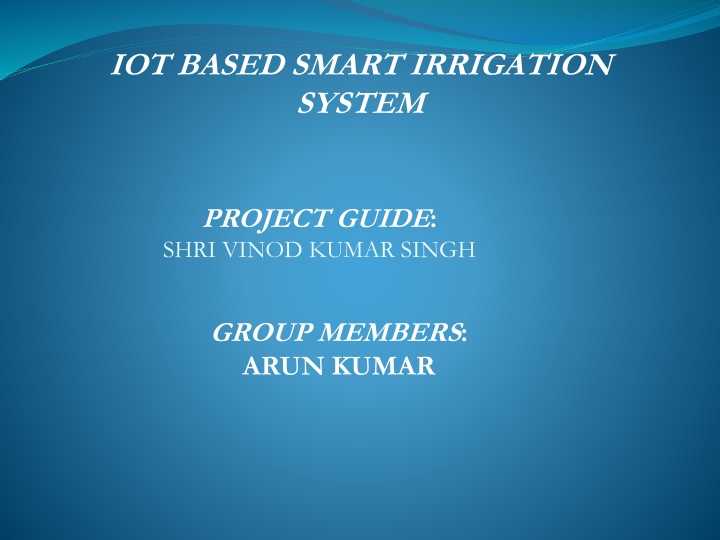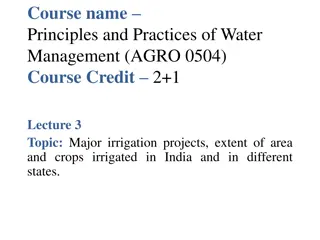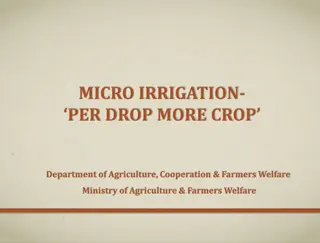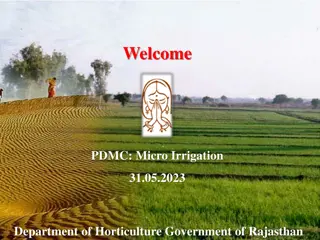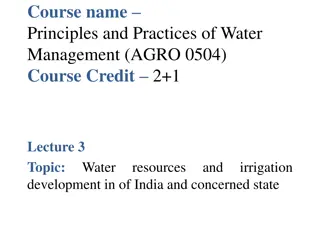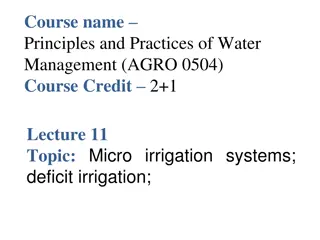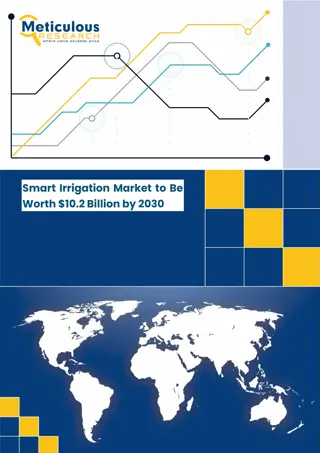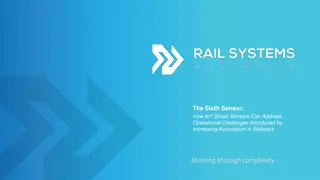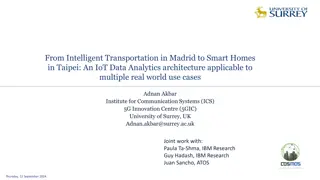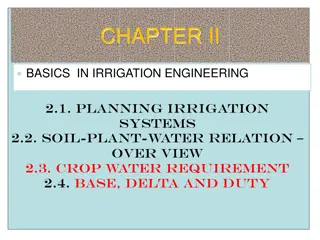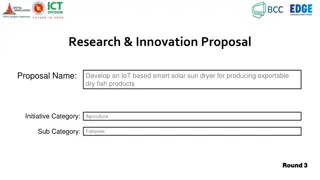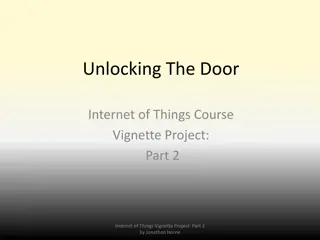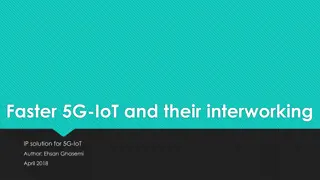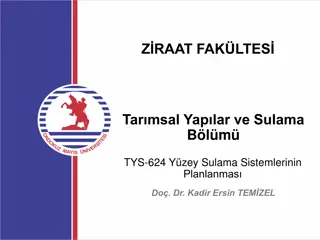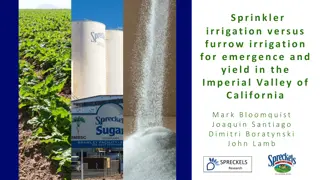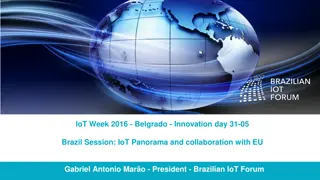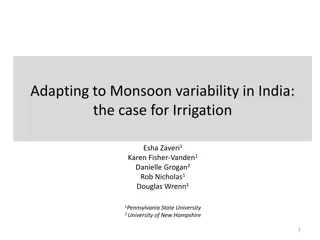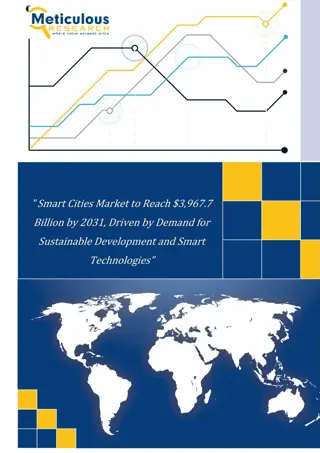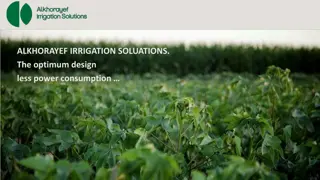IoT-Based Smart Irrigation System Project Guide
This project guide authored by Shri Vinod Kumar Singh provides comprehensive insights into the development of an IoT-based smart irrigation system. The guide outlines the necessary steps, components, and technologies required to create an efficient irrigation system that can enhance water conservation and agricultural productivity. It serves as a valuable resource for individuals interested in implementing IoT solutions in agriculture to optimize water usage and crop yield.
Download Presentation

Please find below an Image/Link to download the presentation.
The content on the website is provided AS IS for your information and personal use only. It may not be sold, licensed, or shared on other websites without obtaining consent from the author.If you encounter any issues during the download, it is possible that the publisher has removed the file from their server.
You are allowed to download the files provided on this website for personal or commercial use, subject to the condition that they are used lawfully. All files are the property of their respective owners.
The content on the website is provided AS IS for your information and personal use only. It may not be sold, licensed, or shared on other websites without obtaining consent from the author.
E N D
Presentation Transcript
IOT BASED SMART IRRIGATION SYSTEM PROJECT GUIDE: SHRI VINOD KUMAR SINGH GROUP MEMBERS: ARUN KUMAR
INTRODUCTION Monson dependent Indian Agriculture. Automatic irrigation. An over irrigation and under irrigation. Soil moisture, air humidity, temperature and water level in the soil are wireless technology for batter production.
Objectives: To save water and reduce human intervention in the agriculture field To get the output of soil water Sensor and provide water to crop.
System Hardware Design The hardware consist of two section : Transmitter Section Receiver Section The system also consist of microcontroller 328P,GSM module , LCD , and ZigBee module
WORKING The block diagram of the proposed irrigation system is shown in Above. The main advantage of the proposed irrigation system is that it can send the information of a soil to the user through IOT network for irrigation. Power supply is given to the circuit in the form of voltage or current. Here soil moisture sensor measures the water content of soil and its output is fed to the amplifier, which is used to improve the gain value. And this measured value is given to the Arduino Uno as analog input. And second input of the Arduino comes from LDR and laser. These two analog inputs are converted to digital output values by Arduino Uno.
SENSORS Three sensor used in the system which are mainly as follows: Temperature Soil moisture Humidity
TEMPERATURE SENSOR LM35 Output voltage is linearly proportional to the Celsius (centigrade) temperature. Temperature range is -55to 150 degree C.
SOIL MOISTURE SENSORS Common type is a frequency domain sensor . Neutron moisture gauge. In this sensor we are using 2 probes to be dipped into the soil as per moisture we will get analog output variations from 0.60-12 volts.
HUMIDITY SENSORS It measures both air temperature and moisture . Relative humidity expressed as a percentage . HS1100 is used for sensing humidity . The output in terms of frequency range 5khz to 10khz.
ADVANTAGES Increase in productivity. Reduced water consumption. Safe. No manpower required. Reduce soil erosion and nutrient leaching. Require smaller water source.
REFERENCES Tope G., Patel A. 2014 . International Journal Of Current Engineering And Scientific Research (IJCESR). VOL.2. www.ijert.org/ smart irrigation system using wireless-sensor-network The ZigBee alliance website online available https://www.zigbee.org .
